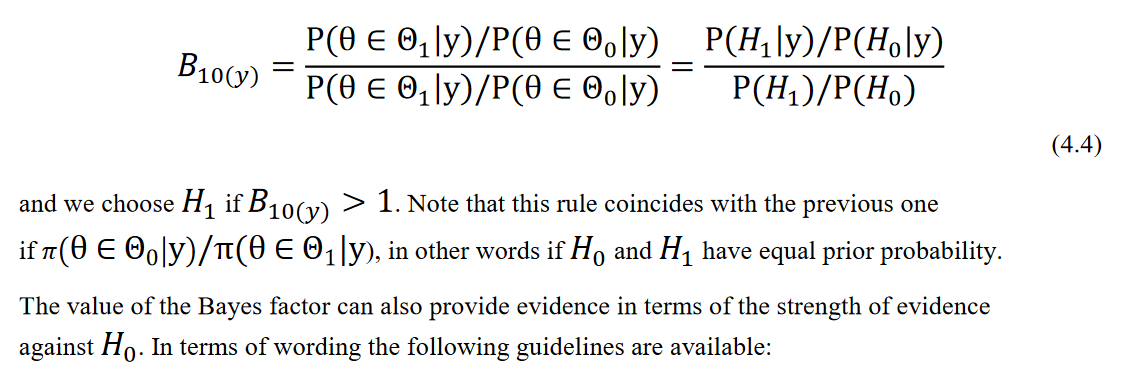I am new to Bayesian statistics. I am trying to understand my course notes on this topic. Here are the notes:
I will try to explain what these notes are saying and hopefully someone can correct my misunderstandings.
The opening two lines are relatively straightforward, because in Bayesian statistics we conceive of $\theta$ as a random variable, and we select whichever hypothesis has the higher probability, conditional on the data we've observed.
Regarding the Bayes factors, the Bayes factor against $H_0$ is
$$B = \frac{\frac{P(\theta \in \Theta_1 | y)}{P(\theta \in \Theta_0 | y)}}{\frac{P(\theta \in \Theta_1)}{P(\theta \in \Theta_0)}}.$$
(I found the $B_{10(y)}$ notation very confusing.) We choose $H_1$ if $B > 1$, or $\log_{10} B > 0$. Intuitively we are looking for the alternative hypothesis to gain on the null hypothesis when we update for the observed data.
Regarding the table of values given, I think I am supposed to reject $H_0$ for all these values. I found the table confusing because I guess my reflexes are more frequentist so when I read "evidence against $H_0$ is poor" I imagine something like a $p$-value of $0.09$, which is supposed to imply a level of evidence against $H_0$ that is non-zero but still too weak to reject $H_0$. However with this Bayes factor method, we more readily reject $H_0$ because we just require $H_1$ to be "better" (according to the definition of $B$) than $H_0$.
Am I making sense? I appreciate any help.



